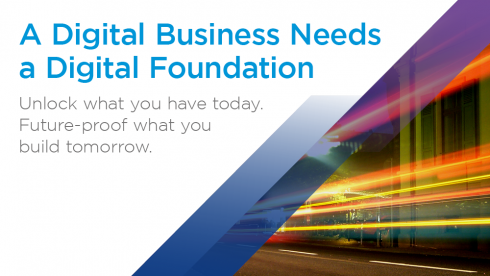DISCLAIMER: this article is older than one year and may not be up to date with recent events or newly available information.
Laith Bahoshy, EMEA Head of Solutions Engineering for Cloud.
It’s just over a year since VMware Cloud on AWS launched in Europe. While our partnership with Amazon stretches back a couple of years further, the introduction of this solution was the first time our customers and partners in EMEA had a chance to get a proper look at the fruits of that relationship.
Initially, we provoked a lot of interest just from bringing together two innovators in what might historically have been considered competing fields. People understood who Amazon was, and they know who VMware is, so a lot of our early conversations were about how the two come together.
Four in one
Fast forward a year, and it’s pretty clear our customers and partners have a clear view of the benefits VMware Cloud on AWS brings. In fact, such has been the enthusiasm for how well it provides an answer to some of the questions are customers have about managing hybrid cloud, that we’ve seen four clear use cases coming to the fore so far: cloud migrations; on-demand capacity, disaster recovery and next generation applications.
- Cloud migrations: The most common use case has been to deploy VMware Cloud on AWS for cloud migrations, predominantly to support data center exits and consolidations but also application specific.
Many enterprises are looking to get out of data centers to some degree, moving away from a capital expenditure model. They’re looking at how they migrate to public cloud, the time it takes to move applications (how long they think it will take versus the reality, which is usually longer), and trying to find a way to do it that doesn’t require new skills or operating models. They want it seamless, and as easy as possible.
There’s also the issue of consolidating data centers in situations such as mergers and acquisitions, where they need to bring together the legacy systems of two separate companies and avoid the integration pitfalls that often dog M&A.
Finally, reducing carbon footprint is coming up as a reason to reduce their reliance on data centers. This is something we’re going to see more of as becoming and remaining sustainable, with as low a carbon footprint as possible, becomes a more prominent business objective.
- On-demand capacity: As customers run out of capacity on their data centers, they’re looking for a solution that enables them to scale up and down rapidly. VMware Cloud on AWS combines the ability to manage capacity flexibly and meet rapidly changing line of business expectations. It’s exactly what Playtika, the games development company I mentioned in my last post, did: it used VMware Cloud on AWS to create a new development environment for hundreds of developers in just a few days, moving hundreds of workloads without disrupting the business.
- Disaster recovery: Previously customers might have had duplicate or even multiple data centers to meet their disaster recovery requirements. With VMware Cloud on AWS they have a choice of either using it as disaster recover or deploying existing data centers in that role (until the end of their contract). They also have the opportunity to move from a data center-based, all or nothing approach, to only having disaster recovery for the applications they absolutely need.
- Next generation applications: We still see demand for customers needing to create new and modernised versions of their applications without being entirely cloud native. With VMware Cloud on AWS, customers can not only rapidly deploy to production and leverage the scale and elasticity of the AWS bare metal infrastructure, but also gain significant application performance improvement. On top of that, they have higher availability through a stretched cluster over multi-availability zones, unique to the service.
We are also seeing another emerging scenario where, with VMware Cloud on AWS, customers have the choice to natively modernise only part of the application, meaning ‘hybrid app’. This could be being the need to modernise the front-end only with native AWS services, whilst keeping the database on their private or on-premise environment for data restrictions or compliance requirements. Customers may even decide to move that front-end to a different geographical location, perhaps to be closer to end users or even to other natively based applications to reduce network latency and traffic charges. These hybrid apps can easily share data and allow IT teams to manage the different environments in a consistent manner. This is VMware Cloud on AWS giving customers the choice on how and when to best modernise their applications, aligned with their business needs and overall strategy.
What about Partners?
These are all live examples of how our customers are using VMware Cloud on AWS. This isn’t just something for them, however – we are seeing similar traction with partners looking to deliver more innovation and value to their customers.
In my next post, I would like to highlight two publicly announced solutions by our partners to deliver an enhanced service to customers.
Tieto and T-Systems are two innovative businesses committed to supporting enterprises achieve their transformation goals. Find out how they’re using VMware Cloud on AWS next time.
Category: News & Highlights
Tags: AWS, cloud migrations, Cloud on AWS, on-demand, partners, Public Cloud, VMware Cloud, VMware Cloud of AWS





No comments yet